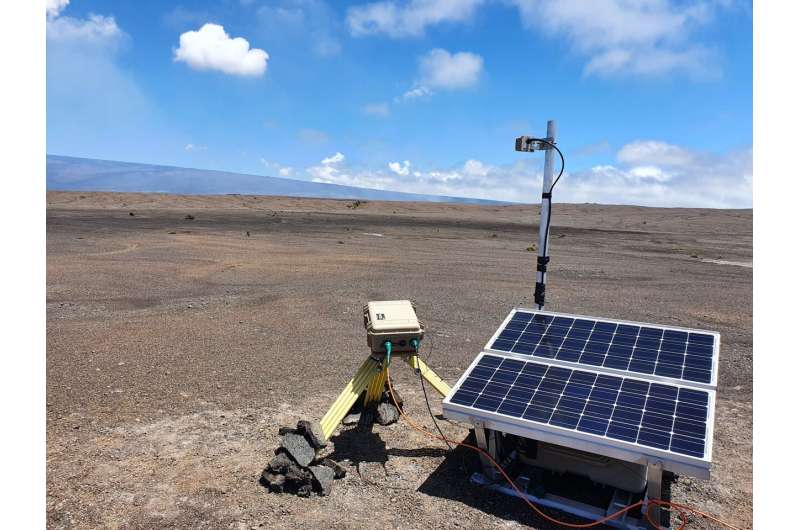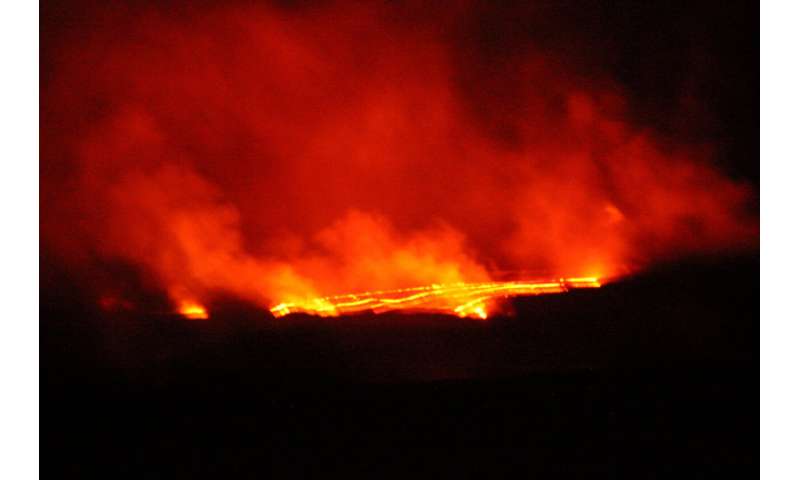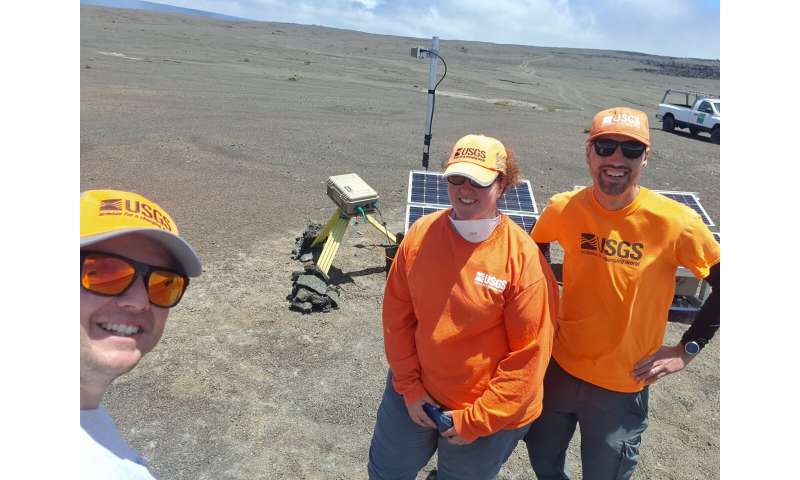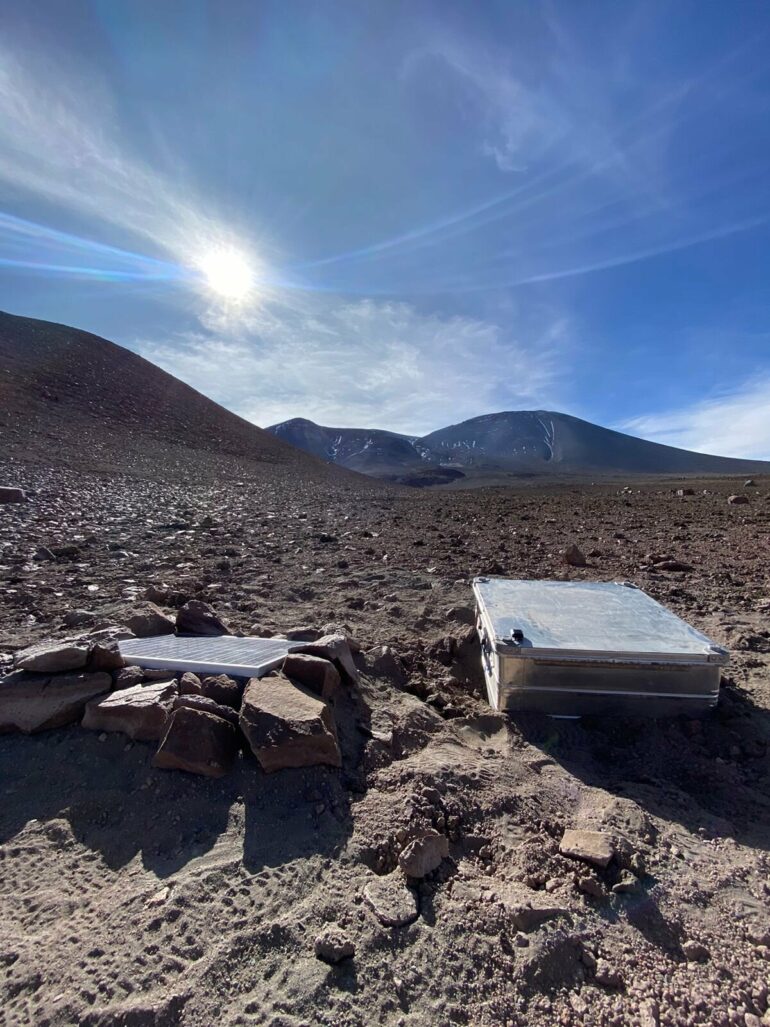Gas emissions are the manifestation of activity occurring beneath the surface of a volcano. Measuring them lets researchers see what can’t be seen from the surface. This knowledge is vital for hazard monitoring and the prediction of future eruptions. Since the mid-2000s, ultraviolet SO2 cameras have become important tools to measureemissions.
The measurement campaigns, however, must be accompanied by a user, making SO2 cameras unsuitable for acquiring long-term datasets. Building and operating this type of camera can cost upwards of $20,000, resulting in very few cameras being installed permanently.
To get better long-term monitoring data, an international team of researchers has developed an SO2 camera to continually measure emission rates from volcanoes. They have now published an article about the camera design and two initial datasets in Frontiers in Earth Science.
“Our instrument uses a sensor not dissimilar to smartphone camera sensors. It is modified to make it sensitive to ultraviolet light, therefore enabling SO2 detection,” said Dr. Thomas Wilkes, a researcher at the University of Sheffield and lead author of the study.

The SO2 camera installation on Kīlauea volcano, Hawaii, US. The gas plume can be faintly seen rising from the crater at the centre of the image and drifting to the left. The flank of Moana Loa can be seen in the background. © Dr Tom Pering
Less costly and power intensive
Compared to previous models, the researchers’ SO2 camera is significantly cheaper and uses less power. The new design comes with a price tag of around $5,000, reducing the cost of parts needed to build the camera down to approximately a fourth of previous models.
“Wherever possible we 3D print parts too, to keep costs as low as we can,” Wilkes explained. “We also introduce a user-friendly, freely available software for controlling the instrument and processing the acquired data in a robust manner.” The affordability and user-friendliness makes the camera accessible to more volcanologists who otherwise might not have access to datasets containing accurate gas emission rates.
Additionally, the power consumption of the system is low, with an average of 3.75 Watts. This is about half of what was needed to power systems presented previously. On sites where there is little solar power to be harnessed this will be especially beneficial, the researchers wrote. Their camera runs on fewer or smaller solar panels or batteries, reducing the overall cost further.
While there are other instruments to measure volcanic emissions, “the SO2 camera can provide higher time- and spatial-resolution data which could facilitate new volcanological research when installed permanently,” said Wilkes.

Kīlauea lava lake captured at night, with the relatively substantial gaseous emissions clearly visible. © Dr Tom Pering

The SO2 camera installation team for Kīlauea volcano (left to right: Dr Christoph Kern (USGS), Dr Patricia Nadeau (USGS), Dr Tom Pering (University of Sheffield)). © Dr Tom Pering
Data from Chile and Hawaii
Wilkes and his team also presented two preliminary data sets from Lascar, a stratovolcano in Chile, and Kilauea, a shield volcano on Hawaii’s Big Island, where their camera is in continuous operation.
“Before now, only three volcanoes have had permanent SO2 cameras installed on them,” Wilkes said. “Discrete field campaigns have been carried out, and whilst they can be invaluable for a range of research questions, it is important to be able to measure volcanic activity continuously, since it can vary substantially from minutes to decades to centuries and beyond.”
Despite being cost-efficient and easy to use, the researchers pointed to some limitations of SO2 cameras: “They are dependent on meteorological conditions, and work best under clear blue skies when the volcanic gas plume moves in a 90-degree angle to the viewing direction of the camera,” said Wilkes.
More information:
A new permanent, low-cost, low-power SO2 camera for continuous measurement of volcanic emissions, Frontiers in Earth Science (2023). DOI: 10.3389/feart.2023.1088992
Citation:
New low-cost camera could help scientists forecast volcano eruptions affecting millions (2023, April 4)
